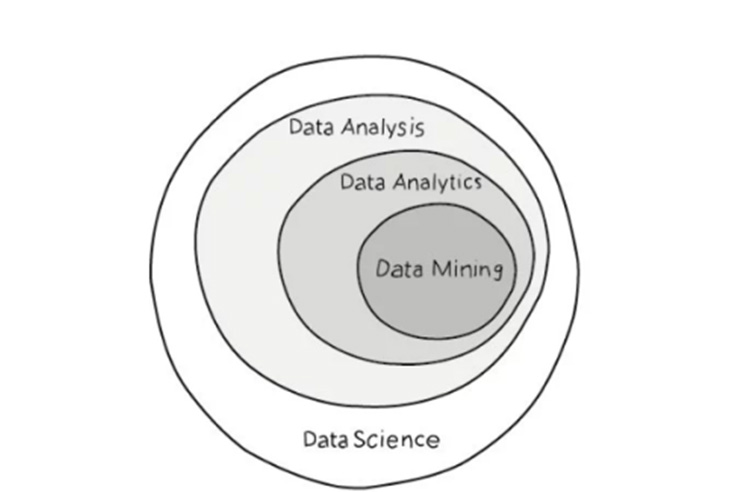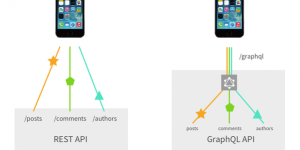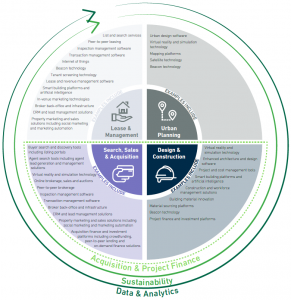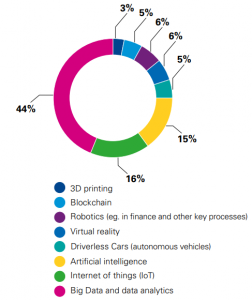Big data has become a major component in the tech world today, thanks to the actionable insights and results businesses can glean. However, the creation of such large data sets also requires understanding and having the proper tools on hand to parse through them to uncover the right information. To better comprehend big data, the fields of data science and analytics have gone from largely being relegated to academia, to instead becoming integral elements of business intelligence and big data analytics tools.
However, it can be confusing to differentiate between data analytics and data science. Despite the two being interconnected, they provide different results and pursue different approaches. If you need to study data your business is producing, it’s vital to grasp what they bring to the table, and how each is unique. To help you optimize your big data analytics, we break down both categories, examine their differences, and reveal the value they deliver.
What is Data Science?
Data science is a multidisciplinary field focused on finding actionable insights from large sets of raw and structured data. The field primarily fixates on unearthing answers to the things we don’t know we don’t know. Data science experts use several different techniques to obtain answers, incorporating computer science, predictive analytics statistics, and machine learning to parse through massive data sets in an effort to establish solutions to problems that haven’t been thought of yet.
Data scientists main goal is to ask questions and locate potential avenues of study, with less concern for specific answers and more emphasis placed on finding the right question to ask. Experts accomplish this by predicting potential trends, exploring disparate and disconnected data sources, and finding better ways to analyze information.
What is Data Analytics?
Data analytics focuses on processing and performing statistical analysis of existing data sets. Analysts concentrate on creating methods to capture, process, and organize data to uncover actionable insights for current problems, and establishing the best way to present this data. More simply, the field of data and analytics. is directed towards solving problems for questions we know we don’t know the answers to. More importantly, it’s based on producing results that can lead to immediate improvements.
Data analytics also encompasses a few different branches of broader statistics and analysis which help combine diverse sources of data and locate connections while simplifying the results.
What is The Difference?
While many people use the terms interchangeably, data science and big data analytics are unique fields, with the major difference being the scope. Data science is an umbrella term for a group of fields that are used to mine large data sets. Data analytics is a more focused version of this and can even be considered part of the larger process. Analytics is devoted to realizing actionable insights that can be applied immediately based on existing queries.
 Another significant difference between the two fields is a question of exploration. Data science isn’t concerned with answering specific queries. Instead of parsing through, massive data sets in sometimes unstructured ways to expose insights. Data analysis works better when it is focused, having questions in mind that need answers based on existing data. Data science produces broader insights that concentrate on which questions should be asked, while big data analytics emphasizes discovering answers to questions being asked.
Another significant difference between the two fields is a question of exploration. Data science isn’t concerned with answering specific queries. Instead of parsing through, massive data sets in sometimes unstructured ways to expose insights. Data analysis works better when it is focused, having questions in mind that need answers based on existing data. Data science produces broader insights that concentrate on which questions should be asked, while big data analytics emphasizes discovering answers to questions being asked.
More importantly, data science is more concerned about asking questions than finding specific answers. The field is focused on establishing potential trends based on existing data, as well as realizing better ways to analyze and model data.
| Data Science | Data Analytics | |
| Scope | Macro | Micro |
| Goal | To ask the right questions | Find actionable data |
| Major Fields | Machine learning, AI, search engine engineering, corporate analytics | Healthcare, gaming, travel, industries with immediate data needs |
| Using Big Data | Yes | Yes |
The two fields can be considered different sides of the same coin, and their functions are highly interconnected. Data science lays important foundations and parses big data sets to create initial observations, future trends, and potential insights that can be important. This information by itself is useful for some fields especially modeling, improving machine learning, and enhancing AI algorithms as it can improve how information is sorted and understood. However, data science asks important questions that we were unaware of before while providing little in the way of hard answers. By adding data analytics into the mix, we can turn those things we know we don’t know into actionable insights with practical applications.
When thinking of these two disciplines, it’s important to forget about viewing them as ‘data science vs data analytics’. Instead, we should see them as parts of a whole that are vital to understanding not just the information we have, but how to better analyze and review it.
Hope you all find the blog helpful! Share your thoughts on the topic right now!
Hoa Nguyen
Big Data changing Real Estate
Big Data is one of the technologies that gained its popularity in the real estate markets of many countries. The goal of Big Data technology is to automate the analysis of huge amounts of data from multiple information sources. And human capabilities will not be enough to process all this data. Therefore, companies will be able to optimize financial costs, time, and achieve a more accurate result that won’t be affected by a human factor.
Big Data works with machine learning to solve main business tasks. Huge data massive is analyzed according to set algorithms, and artificial intelligence provides people with the solution of a specific task. The most widespread example – credit appraisal of a borrower in banking or microfinance sector. Many banks already make their decisions on loan issuance on the basis of the verdict from an automated system.
The benefits of Big Data in Real Estate

There are numbers of benefits of Big Data in Real Estate, let’s consider the major ones.
- Reduces risks
Big Data is a great technology for reducing financial risks. How is it possible? Due to predictive analytics. Companies working in the real estate industry can use it to estimate the overall condition of the building based on its age, reconstruction history, and the current owner information. All these help companies make informed decisions as well as provide their customers with up-to-date information and, as a result, increase their satisfaction from working with them. - Improves the customer engagement rate
Specialists working in the real estate field often come across unclear customer behavior and cannot figure out the reason why they do not like the proposed property and refuse from buying it. Predictive analytics can help solve this problem too. Tailor-made algorithms are able to analyze the needs of the customers and improve their overall experience of cooperating with a company or individual. In other words, real estate agents or companies could offer their customers the property of their dreams by leveraging the power of Big Data. - Calculate the exact price
The process of precise cost calculation in the real estate industry is rather difficult and time-consuming. It demands full information about a property’s location, condition, etc. The total price can vary depending on these factors, while most customers are willing to know the final price right away. Again, Big Data comes to the rescue by providing all the required information based on the analysis of neighborhood area, building condition, etc. As a result, a realistic price can be calculated. - Allows for data-driven decisions
Big Data works closely with machine learning and such a combination opens endless opportunities for the business. Just feed the algorithm with necessary data and it will process it to help you make the right decision. - Enhances the marketing strategy
Many real estate agents use social networks to get the required information about customers. The combination of Big Data and machine learning can define who are ready to buy a property and searching for some options at the moment. - In insurance
By processing a big scope of data, the algorithm can define what insurance plan is it better to apply in one or another region. This way, insurance companies can create custom plans.
Please let us know if you have any question. It’s our pleasure to help.
Ngoc Nguyen
INTRO:
Problem: Traditional RESTful web services are not so efficient in some use case:
- Sometimes we want to fetch part of an entity’s data. But web service only returns a complete set of data.
- Sometimes we want to fetch many related entities. But web service only accesses a single entity. So we have to make many round trips.
- If web service (endpoint, resources’ schema) changes, client code has to change as well.
And vice-versa, if the client requires a different set of data, we should change web service to support that, or at least to improve the outcome.
GraphQL solution:
- Allows clients to define the structure of the data required, and exactly the same structure of the data is returned from the server. Therefore it prevents the excessively large amounts of data from being returned.
- GraphQL is not dealing with dedicated resources. Instead, everything is regarded as a graph and connected.
You can combine different entities in one query and you are able to specify which attributes should be included in the response on every level.
- Single endpoint.
Client controls the query part – the query matches exactly the response. You do not need to read the documentation or run the request to know the response structure. Webservice and client can be developed parallel and independently at some extends.
About GraphQL: (more details)
- GraphQL is an open-source data query and manipulation language, and a runtime for fulfilling queries with existing data.
- Developed by Facebook.
- On 9th February 2018, the Schema Definition Language (SDL) was made part of the specification
DETAILS
1. Server
We need to install a GraphQL server to serve data “graphQL way”. It’s available for multiple languages, including Haskell, JavaScript, Python,[10] Ruby, Java, C#, Scala, Go, Elixir,[11] Erlang, PHP, R, and Clojure
- PHP: https://github.com/webonyx/graphql-php or https://github.com/leocavalcante/siler
- Nodejs: https://github.com/graphql/graphql-js/ or https://github.com/graphql/express-graphql (for working with express.js)

Schema:
- In order to describe the data that available to be queried, in the server above, we need to define our schema (types system).
- GraphQL has its own language to write Schemas: The Schema Definition Language (SDL). It’s language-agnostic, so you can use the same set of definition in GraphQL server written by PHP, Nodejs, Python…
- If you want to quickly build & test a schema with Nodejs, go to this in-browser GraphQL server playground
- Schema SDL example:
# hero is an object type
type hero {
ID: ID! # ! mean server will always return a non-null value for ID and name when fetching hero
name: String! # ID and name are fields of scalar type
appearsIn: [movie]! # these fields return a non-null list of movie objects
}
# movie is an object type
type movie {
ID: ID! # ID is a special scalar type
name: String!
character(OrderOfAppearance: Int): [hero] # id argument for nested fields
}
# one query object type is required for a schema, that describe what data can be fetched from client
type queryRootType {
# Get one hero item
hero(id: ID!): hero # accept id argument
# Get all hero items
allHeros: [hero!]!
#get movie
movie(id: ID!): [movie]
}
# one mutation object type, optional for a schema, that describes what data can be sent from the client
type mutationRootType {
addHero(id: ID!, name: String!, appearsIn: movie): hero! # this's the required field
removeHero(id: ID!): hero!
}
# only one schema definition for each schema
schema {
query: queryRootType
mutation: mutationRootType
}
In the server above, write “resolver” to map schema types to actually code that gets data.
Please see PHP tutorial here
Recommendation:
- GraphQL is typically served over HTTP via a single endpoint which expresses the full set of capabilities of the service
- Return JSON (with gzip)
2. Clients:
There are many clients writing in many languages.
Below is some examples using curl, in order to show the most basic form of GraphQL query:
- Search a single hero by id:
curl <your-endpoint> -d '{"query": "query { hero(id: 1) }" }' - Fetch all hero names:
curl <your-endpoint> -d '{"query": "query { allHeros{name} }" }' - There are special types “__schema” and “__type” that enable introspection of the schema:
curl <your-endpoint> -d '{"query": "query { __schema{types{kind, name, possibleTypes{name}}}}" }' curl <your-endpoint> -d '{"query": "query { __type(name:\"hero\"){name, fields{name} } }" } - Allows send variables in “variables” field of our payload:
curl <your-endpoint> -d '{"query": "query($id:ID) { hero(id: $id) }", "variables": {"id":1} }'
Check out our demo here
Comment down below if you have any question or contact us via email for free consultation. Don’t forget to share & subscribe to our blog!
Chuong Nguyen
References
https://medium.com/codingthesmartway-com-blog/rest-vs-graphql-418eac2e3083
https://en.wikipedia.org/wiki/GraphQL
https://graphql.org
https://blog.apollographql.com/three-ways-to-represent-your-graphql-schema-a41f4175100d
https://facebook.github.io/graphql/draft/
PropTech (Property Technology) refers to a small part of digital transformation in Real Estate industry, using technology innovations to tackle challenges in the Property sector (Dearsley, 2017). PropTech comprises of companies/startups offering IT solutions or innovative business model to make Real Estate transactions more fruitful and efficient (Lecamus, 2017).
For the new business model, PropTech organizations target the traditional inefficiency and obsolete procedures of the Real Estate area. For innovative products, PropTech organizations develop innovative hardware, software, as well as other core technologies in building fittings, fixtures, materials, and systems. (Maarbani, 2017)

PropTech products fall into 4 main categories:
- Urban Planning: Companies in this vertical focus on various aspects of urban, rural and community planning, including improving processes related to the land release, planning approvals, protection, and use of the environment, and the enhanced design of the urban environment.
Example:
- Satellite technology
- Mapping platforms
- Beacon technology
- Design & Construction: Including tools and processes used for the design, development, and construction of residential, commercial and industrial Real Estate projects.
Example:
- Project and cost management tools
- Enhanced architecture and design software
- Smart building platforms and artificial intelligence
- Search, Sales & Acquisition: Including tools, processes and business models for searching, marketing and acquiring new and existing residential, commercial and industrial Real Estate.
Example:
- CRM and lead management solutions
- Online brokerage, sales, and auctions
- Buyer search and discovery tools including listing portals
- Leasing & Management: Including tools, processes and business models used for the leasing and management of residential, commercial or industrial Real Estate, from single properties through to solutions designed for complex property portfolios.
Example:
- Lease and revenue management software
- Transaction management software
Above all, Data & Analytics companies identify, collate and analyze relevant big data to enhance operational efficiency, inform decision making and improve the experience of participants (Maarbani, 2017).
According to a survey of KPMG in 2017, the most influential PropTech innovations over the next 5 years are Big Data Analytics, IoT and AI. However, those technologies are immature and will have more substantial impacts over longer 5, 10 or 15-year period. Though now this is an early stage, companies should consider a gradual transformation plan to avoid being left behind with obsolete systems. This is a great opportunity for PropTech startups and innovative ideas to be invested and implemented before the saturation.

(KPMG, 2017)
Over the last 5 years, TwentyCi Asia has successfully developed PropTech products for a number of clients with high-standard delivery quality and high customer satisfaction.
CoVESTA is a fractional property investment platform that provides the opportunity to invest in any available property, anywhere in Australia. Their mission is to help ordinary Australians to get into property investment and build their future wealth.
TwentyEA comprises of experts in the UK home mover market with a team made up of property industry veterans, data scientists and start up technologists. They are well known for quarterly Property & Home mover Report which produces a comprehensive review of the UK property market.
View My Chain sheds new light on the complex home-buying process, allowing users to track every step from Sold Subject to Contract (SSTC) to exchange. Clear, honest, up-to-the-minute information on what’s happening in the chain empowers proactive agents to complete faster than ever before.
Romans is in top 5 largest property groups in the UK. With a full range of property services, Romans helps everyone interested in buying or selling, renting or letting, town planning or mortgage advice.
Comment down below if you have any question or contact us via email for free consultation. Don’t forget to share & subscribe to our blog! See you in the next post!
Olivia Dang
References
Dearsley, J., 2017. WHAT IS PROPTECH?. [Online]
Available at: http://www.jamesdearsley.co.uk/what-is-proptech/
[Accessed 24 10 2018].
KPMG, 2017. Proptech – Bridging the gap, UK: KPMG LLP.
Lecamus, V., 2017. PropTech: What is it and how to address the new wave of real estate startups?. [Online]
Available at: https://medium.com/@vincentlecamus/proptech-what-is-it-and-how-to-address-the-new-wave-of-real-estate-startups-ae9bb52fb128
[Accessed 24 10 2018].
Maarbani, S., 2017. Real Estate Technology – Threat or Opportunity?, s.l.: KPMG.